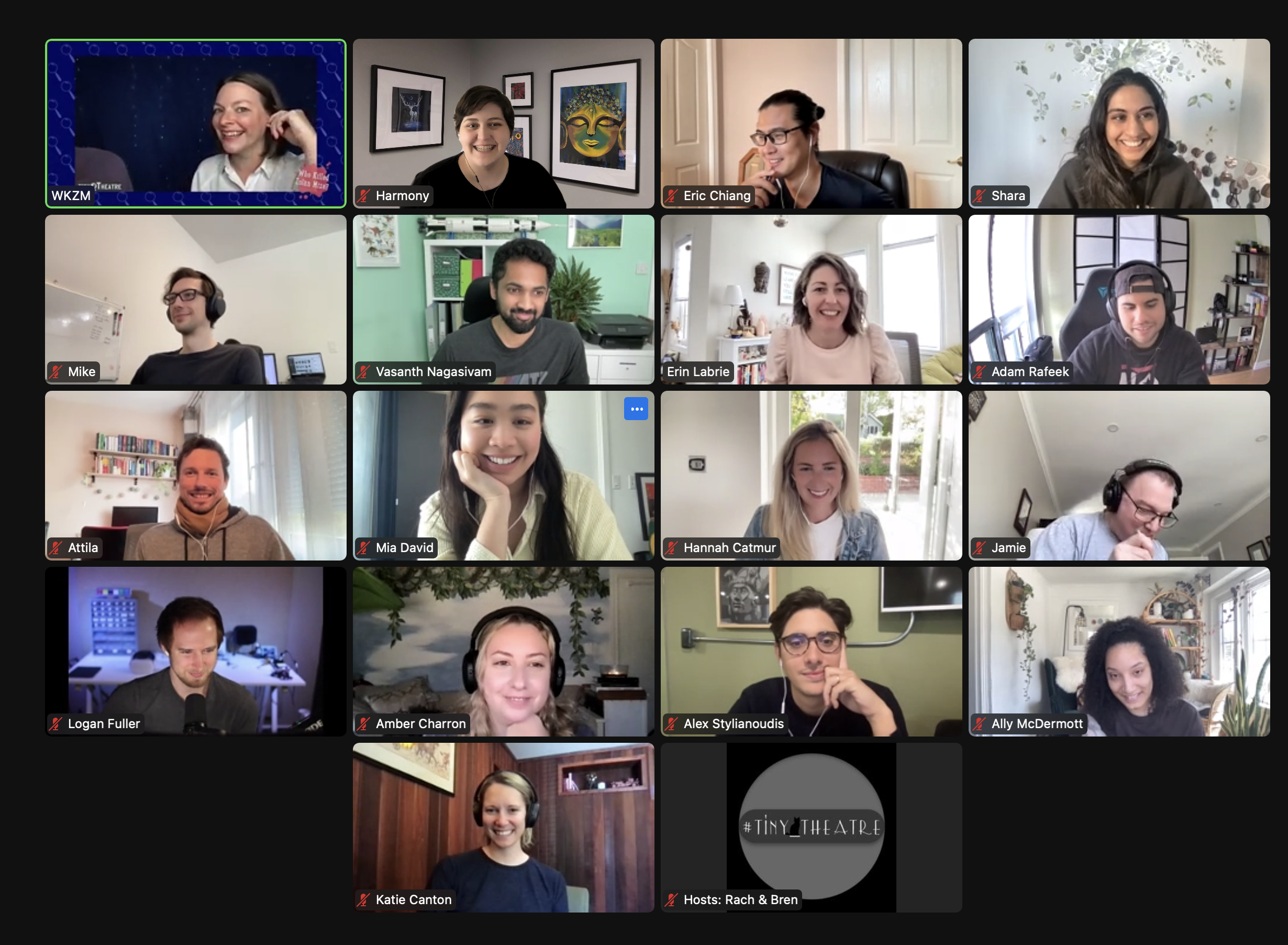25 Fun Employee Engagement Ideas Your Team will Love!
Recruiting and hiring great talent is hard (big surprise, right?), and it’s getting even harder. “The Great Reshuffling” also has you worried about current employee retention. And, well, you should be! A Gallup workplace engagement poll found that “only 36% of U.S. employees are engaged in their work and workplace.” In addition, 15% are actively disengaged, which could lead to severe retention problems.
To keep your team happy, and keep employees from fleeing your flock, foster authentic connections by making everyone feel comfortable, supported and celebrated. Keeping employees engaged with your team, culture and company is one of the best ways to foster long-lasting relationships. 🤝
Jump to:
- What is Employee Engagement?
- 25 Ways to Improve and Sustain Employee Engagement
- What are the 13 Key Elements of Employee Engagement?
- Why is Employee Engagement Important?
- How do you Measure Employee Engagement?
What is Employee Engagement?
HR professionals describe employee engagement as a feeling of commitment and connection to the company. Keeping employees interested and involved is a critical driver of the workplace environment. It means that team members are directing their full efforts, cognitive abilities, and emotional energies towards achieving positive outcomes for the company.
What do engaged employees look like? Generally, you can easily spot them. They are the ones who:
- Appear to be totally absorbed in their work.
- Are enthusiastic about their job, the team and the company.
- Can find genuine meaning in what they do.
- See the connection between their job and the company.
- Want to learn and grow.
- Enjoy spending time with teammates.
Engaged employees are those people who want to bring their best selves to work every day, which means good things for more than just their own personal development - the whole organization benefits, too.

25 Employee Engagement Ideas - Improve and Sustain Employee Engagement
As a business, you can’t just say you want engaged employees - you need to have employee engagement initiatives. It takes a continuous and ongoing effort to demonstrate dedication and commitment to this process. Here are some fun employee engagement ideas that can help promote involvement and team-building efforts. It's easy to take any of these ideas and turn them into fun and rewarding Goosechase group activities you can run quarter after quarter:
(1) Provide recognition based on company values
Consistently recognize employees for going above and beyond to demonstrate commitment to corporate values. Using some of the best incentive schemes for employees, actively reward any behavior that exemplifies what your company wants to demonstrate to customers, and let other employees see how much you appreciate this effort. At Goosechase, we love using services like Bonus.ly that allow us to show appreciation for peers in real time, and allow colleagues to earn tangible rewards (like digital gift cards), too.

(2) Create collaboration opportunities
Promote strong relationships among co-workers by providing opportunities to work together. It doesn’t always have to be about work, though - you can organize opportunities to collaborate on fun activities as well, such as escape rooms, puzzles, scavenger hunts or games. (Or even a Goosechase - wink, wink!).
(3) Be flexible about corporate mobility
Moving up the “corporate ladder” is not always as clear-cut as you’d like it to be. Give employees plenty of latitude to move around within the company, so they can find a career path best suited to them. Remember that some moves might not pan out, and it’s okay to move on. Just seeing what other team members or divisions do can provide insights about how they fit into the overall picture.
(4) Promote community involvement
79% of millennials actively seek out employers that believe in giving back to the community. Beyond just doing good, and promoting your corporate brand to local neighbors, company-organized community involvement opportunities go a long way towards promoting employee engagement.
(5) Organize better meetings
Whether on Zoom or in-person, meetings that drag on and on can zap employee energy, and simply take up precious time that could be spent doing literally anything else. Find better ways to distribute necessary information (we like Loom videos and Slack!), and use more informal sessions for brainstorming and information-gathering (we like Miro for generating and sharing ideas).
(6) Share the vision
Show employees how doing their job contributes to the company’s ability to solve problems and move forward. People who work on social media, for example, have an opportunity to directly influence the brand, but the pictures, videos or funny GIFs they use are just as important to how they frame their message. Clearly demonstrate how each role contributes to the final product - and don’t forget to acknowledge when a job is well done, no matter how big or small!

(7) Assign responsibilities, not just tasks
Mundane tasks may be necessary, but they might ruffle the feathers of people who have to do them Every. Single. Day. Instead of just heaping on tasks, give employees projects they have ownership over, and let them work out ways to accomplish the end goal. Take a step back, and give employees the opportunity to spread their wings and surprise you!
(8) Share knowledge internally
Let employees know what people in other divisions are doing, so they can see how their work contributes to the whole. This can be achieved through informal lunch sessions, or even short videos where they get to watch fellow team members in action.
(9) Be open to ideas
51% of employees say “having opportunities to freely express themselves” makes them feel a sense of belonging at work, so provide ways to express those ideas. They will feel better, and you might just find a great idea that helps the company work more effectively! Think beyond the “suggestion box” to a suggestion roundtable, or “riff sessions with the supervisors” to come up with unique solutions from new perspectives.

(10) Foster advancement opportunities
Help employees advance within your company by providing time and support for educational activities. Pay for courses, invite guest speakers, and allow team members to attend workshops and training opportunities relevant to their job. Have a mentoring system that helps team members find and take advantage of these opportunities.
(11) Leadership by example
Tap your management team and supervisors in the effort to create an engaging environment for the employees they lead. Managers must serve as role models for a passionate and engaged workforce. Lead the flock by example, show that you are engaged, and provide a flight path to inspire the team.
(12) Include remote workers
We learned a lot about engaging remote workers during the COVID-19 pandemic, so let’s not forget those important lessons. Don’t just create programs, and then think about how remote workers can take part as an afterthought. They’re an essential part of your team, and should be made to feel that way! Create virtual team building events they’ll love with remote and in-office workers in mind from the start.

(13) Deliver world-class onboarding
Your company only gets one chance to make a first impression on a new employee, so make it extraordinary. Look at your onboarding process, and see whether it helps employees feel like they are part of a fun team, with the support and tools needed to do their job - or if it’s just a bunch of boring paperwork (we hope not, but if it is, know you aren't alone!). Create opportunities for new hires to quickly interact with team members in one-on-one settings or with out-of-the-box icebreakers, and you’ll forge strong initial connections that set the tone for the collaboration to come.
(14) Solicit input for organizational decisions
Who knows your company better than your employees? When making big decisions, ask for everyone’s input. They’ll feel more empowered, connected, and respected, and you’ll get better ideas that are different from the ones senior management is conditioned to supply. It also provides an opportunity to observe potential future leaders in action.
(15) Demonstrate your commitment to employee wellness
Stress can be positive when it produces the adrenalin needed to make the final surge at the end of a project. On a regular basis, however, stress can be detrimental and often leads to employee turnover. Foster an environment of corporate health and wellness to help employees achieve a positive work-life balance.
(16) Celebrate special days
Throw something different into the mix by celebrating special days that introduce an element of fun. Promote local sports teams by watching a game together after work, or allow employees to come up with a creative twist on their uniform or dress code. Play off themes like National “day ofs” (celebrate Talk Like a Pirate or Chocolate Cake Day), sports tournaments, or even movie award season - something the team can really get into!

(17) Training sessions
Learning and upskilling should never stop - nor should it be boring! Create unique training sessions that involve employees in more hands-on activities, and let them explore new ways of getting their job done.
(18) Rethink recognition
Catch employees in the act of doing something awesome, and give them a reward they will really appreciate, such as unexpected time off or an Uber Eats gift card. Get everyone in on the fun by acknowledging and celebrating each other’s achievements.
(19) Problem pile
Employees can help solve problems for each other. Have everybody write down a job problem, and throw them all in a pile. Pick a problem, and have the group work together to find viable solutions.

(20) Escape room
Use an external escape room, or create your own, where teams use their skills to decipher clues and make their escape. Include remote employees using a virtual escape room options.
(21) Show and tell
Foster ways for employees to share their favorite interests, hobbies, talents, or sports activities with others. Perhaps they can schedule a session to participate in different activities, set up a company Pinterest board with interesting ideas, or create video tutorials to show others why they enjoy this activity so much.
(22) Dancing
Chances are that seeing the word “dancing” made 95% of you feel uncomfortable at first, but stick with us on this one. A fun dance move or a choreographed TikTok-style video dance routine can be just the thing to get employees in step. Hire a choreographer, provide some dance music, give them plenty of space and be sure to record the results for the company’s internal communication channel.
(23) Host a game show
You can create your own version of a game show with questions or activities. It can be about work topics, or just for fun. Look at examples like Jeopardy! or Hollywood Game Night for inspiration.

(24) Food trucks
Food trucks are a great way to interact with local community businesses, and learn about different cuisines. Set up a schedule for local food truck vendors to stop by your office - don’t forget to include a dessert food truck selling cupcakes, ice cream or snow cones!
(25) Food service
Speaking of food, you can improve employees’ work-life balance by helping them find easy options for snacks while at work. Have a designated area to pick up food from local delivery services. You can even make arrangements with a local farm or co-op to offer a farm-fresh subscription box service delivered to your office location, so everyone can enjoy some great produce while supporting local farmers.
What are the 13 Key Elements of Employee Engagement?
Employee engagement is often one of those concepts where you say, “I’ll know it when I see it.” Poor performance, lackluster attendance, and interpersonal differences are all signs of disengagement. But true engagement is a combination of many critical factors. It's more than just job satisfaction.
So what are the 13 key elements engaged employees have in common? They include:
- Knowing what is expected: Engagement builds when employees know where they are going, and what they need to do to get there. Unclear goals or shifting goals lead to confusion and dissatisfaction.
- Having the equipment and materials they need to get the job done: It’s hard to believe in a job, and care about doing it right, when the company doesn’t invest in the necessary tools.
- Enjoying the flexibility to do what they do best: Employees like to use the skills they have, and won’t thrive in jobs that don’t let their talent shine.
- Getting recognition for a job well done: And not just when it comes time for a raise or a promotion. Employee feedback and recognition can be as simple as a “thank you,” celebratory GIF, or shoutout on Slack from a supervisor. It needs to be doled out promptly and consistently.
- Feeling cared about as a person: You never want employees to feel like they are just an impersonal job description with goals.
- Having someone who encourages their development: A career should be a fun and enjoyable experience, with multiple opportunities for advancement. Flying that path alone is difficult, so involve caring supervisors and managers to provide a plan for growth, development, and transparent conversations about careers. (Talk about your Mother Goose!)
- Sharing opinions openly: Engaged employees know their opinions and insights matter. Nobody likes to keep getting shot down when they venture an opinion. If it happens enough, they'll simply shut down and disengage.
- Thinking their job is important: People want to invest their time and energy wisely, and do something that matters. It’s important to believe in the company's vision, and their role in achieving those goals.
- Teammates are equally committed: No person is an island. People want to be part of a flock with others who are equally excited about and committed to their work.
- Workplace friendships: Teams with strong bonds and engaged members naturally seem to form solid friendships. They enjoy being together and working on common goals, and want to spend time together in fun activities. Employees with friends at work are more fully engaged in their work activities.
- Strong channels of communication: Employees want to know how they are doing and where they are going, without waiting for a formal annual review process. Informal - but always professional and respectful! - communication channels, like one-on-ones, can be very effective at helping employees understand where they stand.
- Growth and learning opportunities for employees: Successful employees grow and thrive best when they have goals to work towards, and the support to meet those goals.
- Having fun: Business is serious, but it should also be fun! We built Goosechase to help companies create engaging, delightful and out of the ordinary experiences, so that their employees can have fun. Serious fun!

Why is Employee Engagement Important?
Employees who believe that management is concerned about them as a whole person – not just an employee – are more productive, more satisfied, more fulfilled. Satisfied employees mean satisfied customers, which leads to profitability.
- Anne M. Mulcahy, former CEO of Xerox

It’s not rocket science. Engaged and fulfilled employees are happier! They are better positioned to avoid burnout, feel supported, and achieve a better work-life balance. If your boss is more of a “what does this mean for my bottom line?” kind of decision-maker, here are some good, solid reasons to focus on employee engagement, too:
- Employee engagement reduces absences and turnover.
- Improved employee performance - Organizations with a high level of employee engagement report up to 22% higher productivity levels.
- Communication improves with team members and managers.
- They share their positive attitude with others in and outside the organization.
- Better engagement leads to better employee retention.
- Hiring and training new employees is expensive – it can cost up to 33% of an annual salary to replace an employee.
- Disengaged employees may make disparaging comments to co-workers and outsiders.
- Highly-engaged organizations have up to double the rate of success of less-engaged organizations.
- Happier customers and stakeholders. Engaged employees are more likely to advocate for the business, both internally and externally.
- Just a 5% increase in employee engagement is linked to a 3% lift in revenue a year later.
How Do You Measure Employee Engagement?
Employee engagement is notoriously difficult to quantify, and it can get even harder with hybrid offices or a remote workforce.
Taking the time and effort to assess employee engagement will always be a worthwhile exercise, as long as you follow those learnings up with action.
Some tools you can use to measure employee engagement include:

- Employee engagement surveys and feedback: You can conduct short surveys or in-depth interviews based on the concepts of: feedback, recognition, happiness, relationship with peers and managers, personal growth, satisfaction, wellness, and corporate ambassadorship.
- Stay and exit interviews: Use exit interviews with departing employees to obtain a fair assessment of their engagement level. Also, take the time to conduct stay interviews. Instead of waiting until someone leaves to talk with them, spend time with your current, engaged employees to find out what makes them stay with the organization. Questions might include...
What do you like and dislike most about your job?
What makes for a great work day for you?
What is one thing you would change with your job if you could?
Why do you choose to stay with our company?
- eNPS: The employee Net Promoter Score (eNPS) is a simple way to measure engagement with one simple question, “On a scale of 0-10, how likely are you to recommend our organization as a good place to work to your family or friends?” Because it is so simple, eNPS should never be used as your only measure of success. When paired with some of the other measurement tactics suggested, however, it can be a very valuable barometer of employee engagement.
- Employee retention: Tracking retention rates is an excellent way of monitoring engagement. Engaged employees stay with a company longer, while disengaged employees are more likely to leave. Track your turnover rate on a quarterly or annual basis, and compare it to results from the prior period. If the rates have increased, you might have an engagement issue. Think about what has changed in the company, and conduct a quick employee survey to find out why their attitudes may have changed.
- Continuous listening: When not using more formal survey techniques, help supervisors and management team members learn how to improve their listening skills. Behaviors can change over time, and you want to gather real-time feedback on issues or topics as they arise.
Remember that you can't just pick one of these measurement tools, and then assume you've got engagement measured. One insight might not give you the information you need, or a situation might occur that changes engagement overnight. Use a mix of tools to get an insightful picture, and keep focused on how employees are responding to the company culture.
Approach the concept of employee engagement as a holistic part of your company culture, and you’ll create a productive and fun workplace environment folks want to contribute to. You'll be pleased to see just how far employee engagement activities can take your organization.
What is Goosechase?
At Goosechase, experience is everything. Originally inspired by scavenger hunts, Goosechase is an online platform that enables organizations and schools to engage, activate, and educate their communities through delightful interactive experiences. Sign up and try creating a free recreational Experience, or check out our Pricing!





